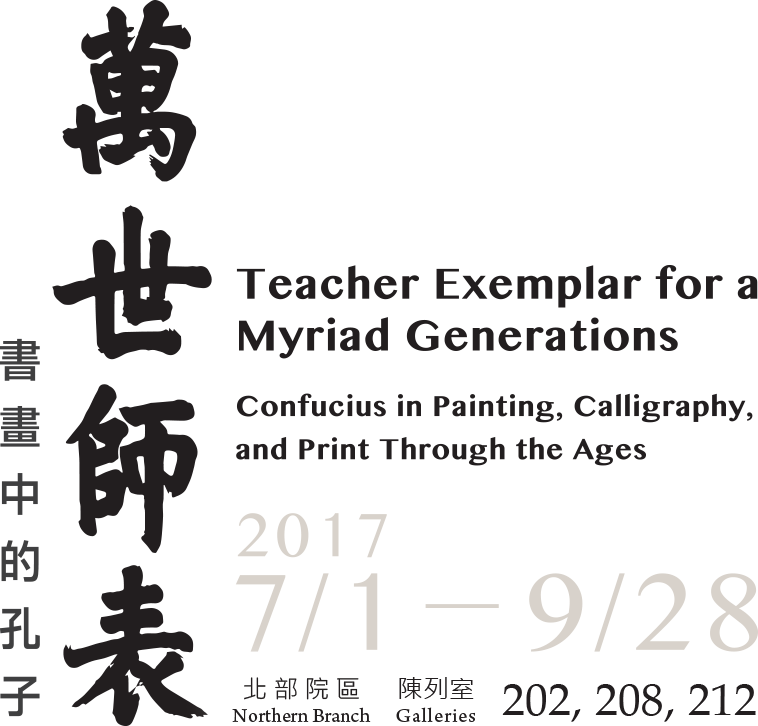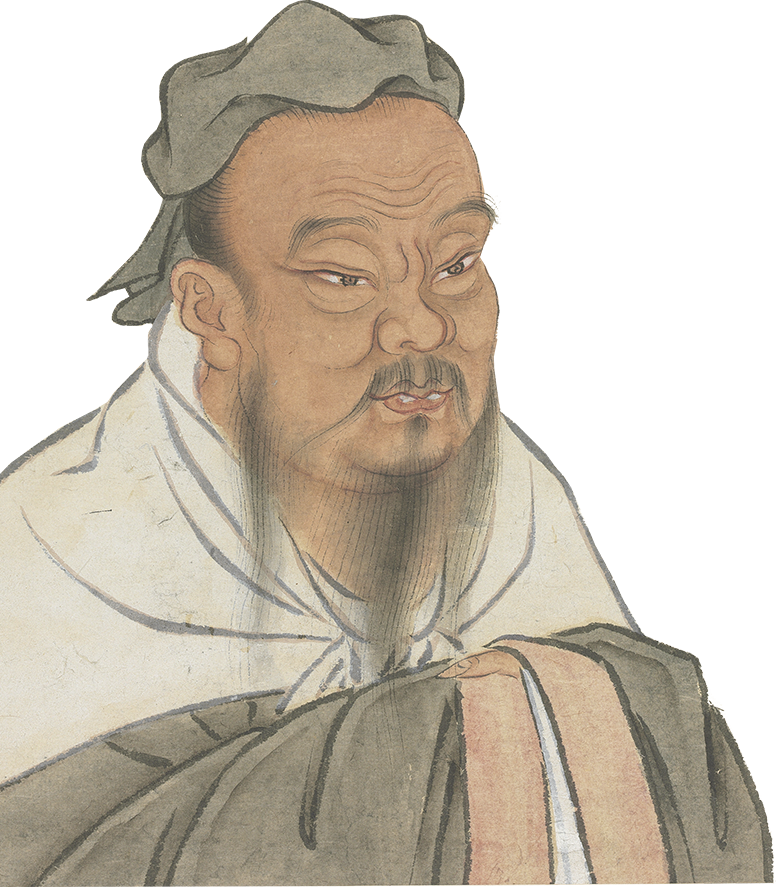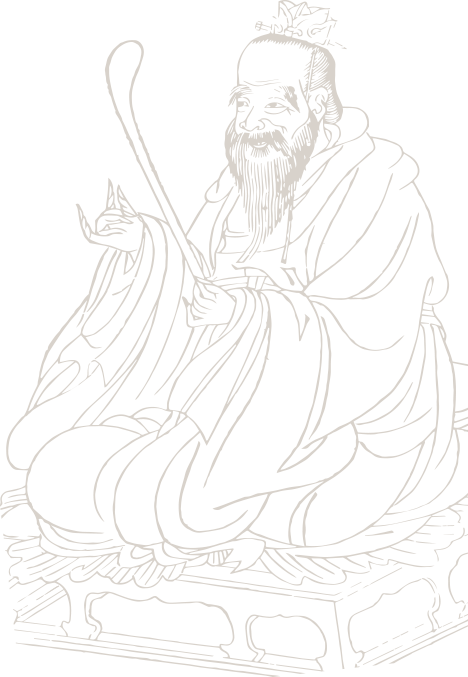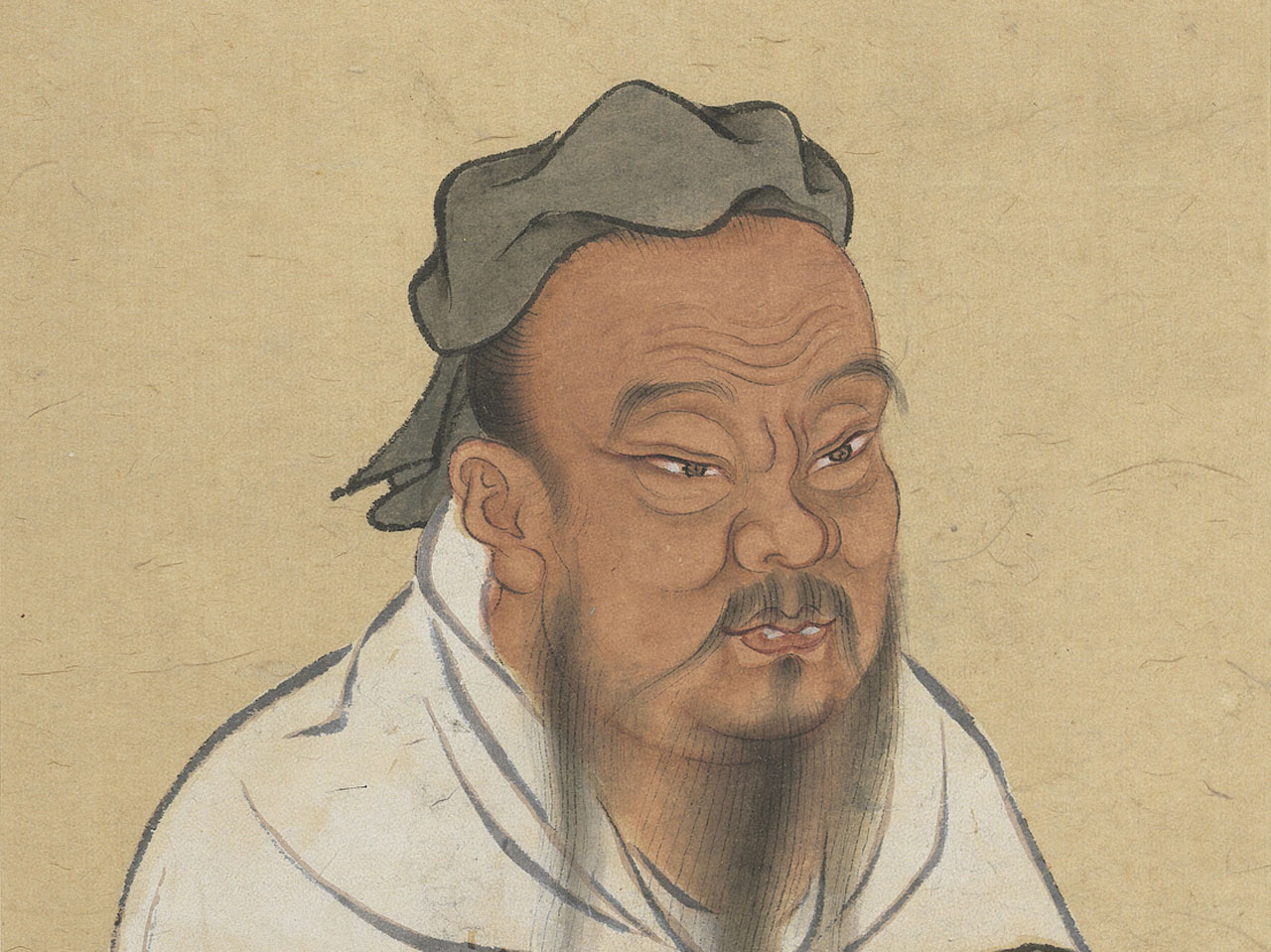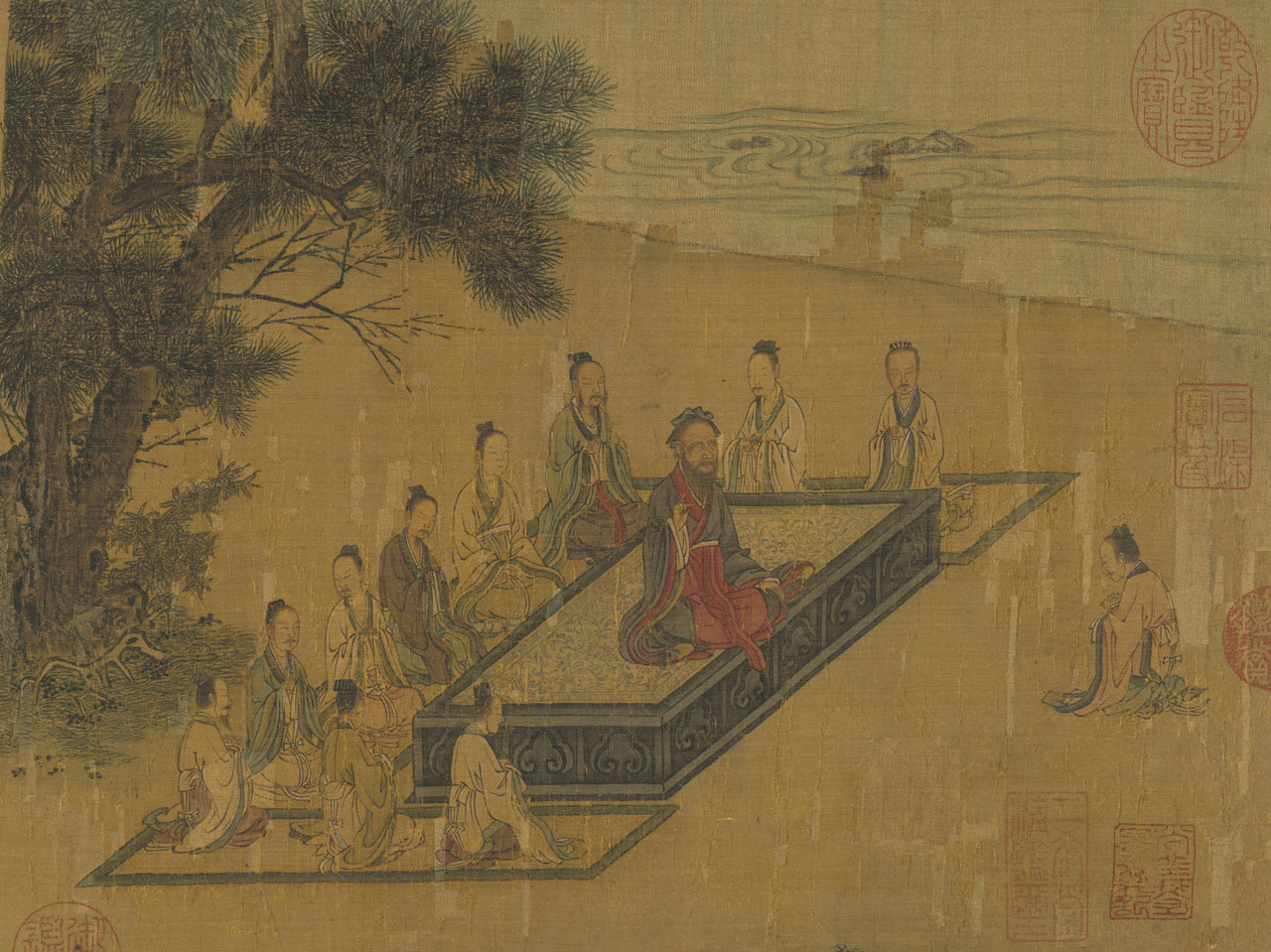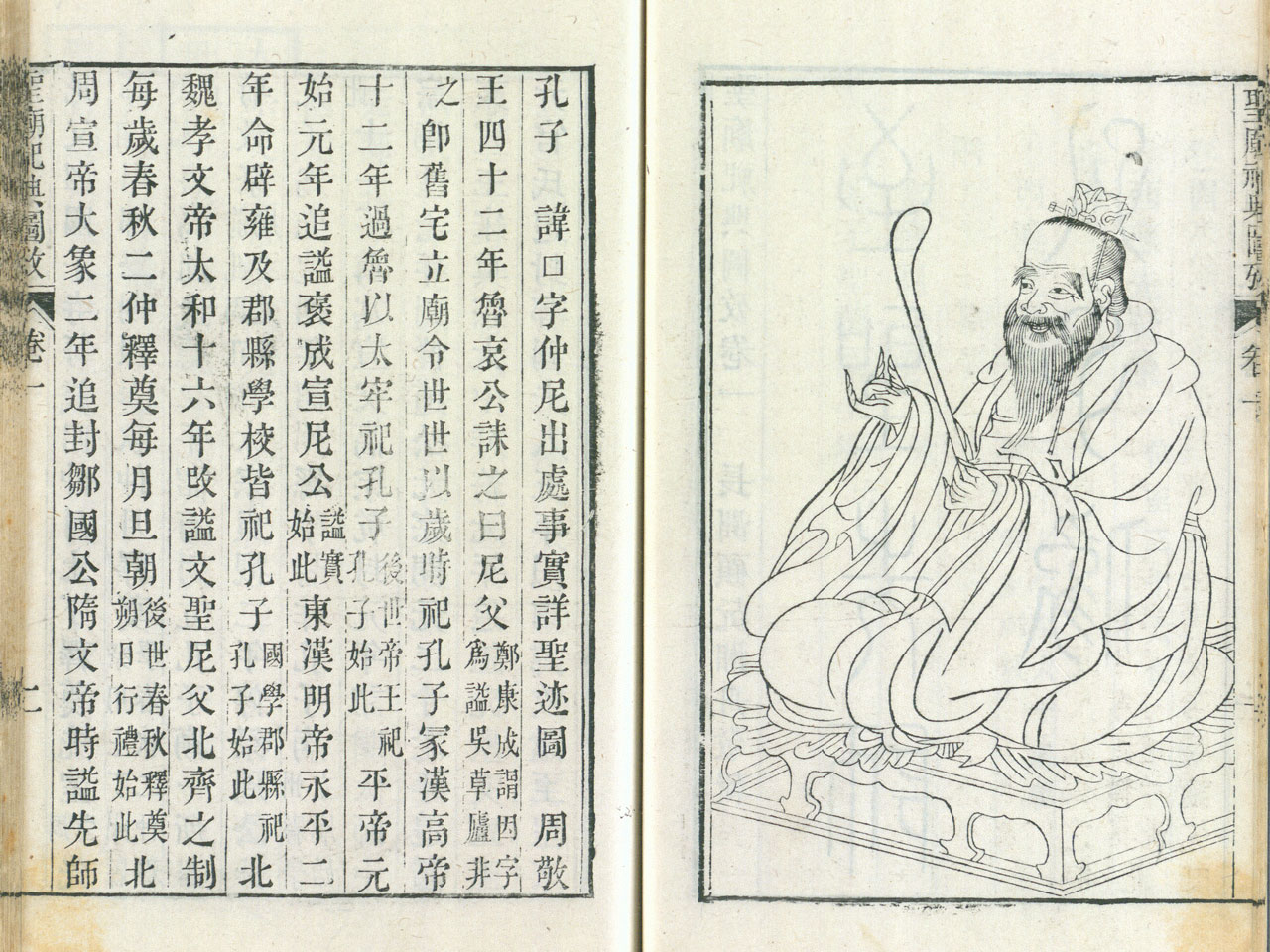Although Confucius in his later years had become a teacher to those in power, the earliest record of an image in his likeness does not appear until "Biography of Cai Yong" in Book of the Later Han. In 178 CE, the School at the Gate of the Great Capital was established with images of Confucius and his 72 disciples painted on the walls, representing a gap of more than six centuries since Confucius had passed away. The various representations of Confucius seen today form the picture that we have of him, and most come from later attempts to portray him from literary descriptions and the imagination.
Half Portraits of the Great Sage and Virtuous Men of Old
- Anonymous, Yuan dynasty (1279-1368)
- Album leaf, ink and colors on paper
- 33.3 x 24.3 cm
This album of sixty leaves begins with a portrait of Confucius and ends with that of Xu Heng (1209-1281), spanning the Spring and Autumn period (770-476 BCE) up to the Yuan dynasty and including 120 notable Confucians. The album was originally stored in the Nanxun Palace, where portraits of rulers and sages over the ages were stored at the Qing dynasty (1644-1911) court. Judging from the names in the title labels in the upper right corners of the portraits, the album must have been done after the Yuan dynasty court ennobled Confucius' major disciples in 1330.
On display in this exhibition are the first seven leaves in order featuring Confucius' Four Attendants and the Ten Philosophers, who are seen in "Book 11, Those of Preceding Eras" from The Analects of Confucius. In it, Confucius cites four disciples most notable for their conduct: Yan Yuan, Min Ziqian, Ran Boniu, and Zonggong. For their speech, there are Zai Wo and Zigong. For their administration, they are Ran You and Jilu. And for their literary skills, there are Ziyou and Zixia. The arrangement of the Four Attendants was established in 1267, late in the Southern Song period, and comprised Yan Yuan, Zeng Shen, Kong Ji, and Meng Ke.
Illustrating The Classic of Filial Piety
- Calligraphy and painting by Gaozong (1107-1187) and Ma Hezhi (ca. 1130-ca. 1170), Song dynasty
- Album leaf, ink and colors on paper
- 28.8 x 33.7 cm
The Classic of Filial Piety, consisting of eighteen chapters, was reportedly written by the disciples of Zengzi (Zheng Shen, 505-435 BCE) after inquiring with Confucius. It discusses people as belonging to five levels of society, starting with the ruler at the top and ending with commoners at the bottom. It also explains the methods and course of putting filial piety into practice.
The painting here is the first leaf to a "Song Album of The Classic of Filial Piety in Painting and Calligraphy," showing Confucius at his residence giving a lecture and Zengzi kneeling before him to ask about filial piety. It appears to have originally been a handscroll with alternating segments of painting and calligraphy that was later remounted due to damage into an album of painting and calligraphy mounted on separate leaves. The texts and images throughout complement each other, the paintings employing various scenes to present the ideas of fully expressing filial piety in different levels of society and the loyal gentleman. It fully manifests the original intent behind its creation as "words for a ruler."
The style of calligraphy in this album is similar to that of Emperor Gaozong but most likely done by a ghostwriter in his Calligraphy Academy. The painting, however, differs from that of Ma Hezhi but is nonetheless a work of the Song dynasty.
Illustrated Investigation of Sacrificial Rites at the Temple of the Sage: Portrait of the Great Sage of All Teachers, Confucius
- Gu Yuan (1799-1851), Qing dynasty
- Imprint of the Ciyan Hall, 1826, Qing dynasty
- 18 x 12.5 cm
The portrait of Confucius here is a woodblock print illustration in lines that depicts him with much facial hair and wearing formal official garments. Seated upright, he is also holding a scepter-tablet. Judging from the gesture of his hand and the mouth slightly open, it may be surmised to be an illustration of Confucius "At His Hometown" from The Analects of Confucius, which states, "When he was in the ancestral temple or at court, he spoke articulately but with caution."
The object that Confucius holds is described in the "Jade-bead Pendants" section of The Book of Rites as follows: "For his memorandum-tablet, the Son of Heaven used round jade; the nobility, a piece of ivory; Great Masters, a piece of bamboo ornamented with fishbone; and officers, bamboo with ivory at the bottom. When he pointed to or drew something for the ruler, he used the tablet. Going before him and receiving an order, he wrote on it. For all these purposes, the tablet was used, and so it was ornamental." According to regulations governing ancient rituals, all members of nobility and the court were required to bring a tablet when having an audience with the emperor, which was used for illustrating or pointing something out as well as taking memos.
This woodblock illustration shows Confucius describing the state of affairs to the ruler in the ancestral temple. The lines for the depiction appear like the gossamer strands of high antiquity, each one even and refined yet strong. On the opposing page are the positions and titles bestowed upon Confucius by emperors from the Zhou to Sui dynasties.
